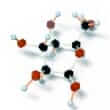Background
- Pyruvate is a three-carbon organic acid (alpha-ketocarboxylic acid) that is formed in the body during glycolysis, a metabolic process that converts glucose to pyruvate.
- Pyruvate supplementation is commonly used for weight and fat loss. In general, the marketing of pyruvate for these purposes is based on studies using a combination of pyruvate and dihydroxyacetone. While several clinical trials do support the use of pyruvate for this purpose, results are mixed overall. Although pyruvate is commonly used for exercise performance improvement, this use is not supported by scientific evidence.
- There is inconclusive evidence regarding the use of pyruvate for alcoholic liver disease, chronic obstructive pulmonary disease (COPD), congestive heart failure, high cholesterol, and hyperkeratotic skin conditions. Further research is also needed to assess the effects of pyruvate in combination with cardioplegic solution for protecting heart muscle during surgery.
References
- Andersson A, Fenhammar J, Frithiof R, et al. Haemodynamic and metabolic effects of resuscitation with Ringer's ethyl pyruvate in the acute phase of porcine endotoxaemic shock. Acta Anaesthesiol Scand 2006;50(10):1198-1206. View Abstract
- Boschmann M, Engeli S, Dobberstein K, et al. Dipeptidyl-peptidase-IV inhibition augments postprandial lipid mobilization and oxidation in type 2 diabetic patients. J Clin Endocrinol Metab 2009;94(3):846-852. View Abstract
- Faldini A, Marchetti N. [Clinical trial of a new synthetic product: o-ethoxybenzylhydrazone of diethanolamine pyruvate associated with vitamins B 1, B 6 and B 12 and dichloroethanoate of diisopropylammonium in the treatment of rheumatic and neuritic pain syndromes]. Minerva Ortop 1970;21(1):51-56. View Abstract
- Fink MP. Ethyl pyruvate: a novel treatment for sepsis. Novartis Found Symp 2007;280:147-156. View Abstract
- Fink MP. Ethyl pyruvate: a novel treatment for sepsis and shock. Minerva Anestesiol 2004;70(5):365-371. View Abstract
- Hermann HP, Arp J, Pieske B, et al. Improved systolic and diastolic myocardial function with intracoronary pyruvate in patients with congestive heart failure. Eur J Heart Fail 2004;6(2):213-218. View Abstract
- Knott EM, Ryou MG, Sun J. Pyruvate-fortified cardioplegia suppresses oxidative stress and enhances phosphorylation potential of arrested myocardium. Am J Physiol Heart Circ Physiol 2005;289(3):H1123-H1130. View Abstract
- Knott EM, Sun J, Lei Y, et al. Pyruvate mitigates oxidative stress during reperfusion of cardioplegia-arrested myocardium. Ann Thorac Surg 2006;81(3):928-934. View Abstract
- Mallet RT, Sun J, Knott EM,et al. Metabolic cardioprotection by pyruvate: recent progress. Exp Biol Med (Maywood ) 2005;230(7):435-443. View Abstract
- Olivencia-Yurvati AH, Blair JL, Baig M,et al. Pyruvate-enhanced cardioprotection during surgery with cardiopulmonary bypass. J Cardiothorac Vasc Anesth 2003;17(6):715-720. View Abstract
- Sharma AB, Barlow MA, Yang SH, et al. Pyruvate enhances neurological recovery following cardiopulmonary arrest and resuscitation. Resuscitation 2008;76(1):108-119. View Abstract
- Sharma AB, Knott EM, Bi J, et al. Pyruvate improves cardiac electromechanical and metabolic recovery from cardiopulmonary arrest and resuscitation. Resuscitation 2005;66(1):71-81. View Abstract
- Stanko RT, Reynolds HR, Hoyson R,et al. Pyruvate supplementation of a low-cholesterol, low-fat diet: effects on plasma lipid concentrations and body composition in hyperlipidemic patients. Am J Clin Nutr 1994;59(2):423-427. View Abstract
- Stanko RT, Reynolds HR, Lonchar KD, et al. Plasma lipid concentrations in hyperlipidemic patients consuming a high-fat diet supplemented with pyruvate for 6 wk. Am J Clin Nutr 1992;56(5):950-954. View Abstract
- Votto JJ, Bowen JB, Barton RW, et al. Inhaled sodium pyruvate improved FEV1 and decreased expired breath levels of nitric oxide in patients with chronic obstructive pulmonary disease. J Aerosol Med Pulm Drug Deliv 2008;21(4):329-334. View Abstract







